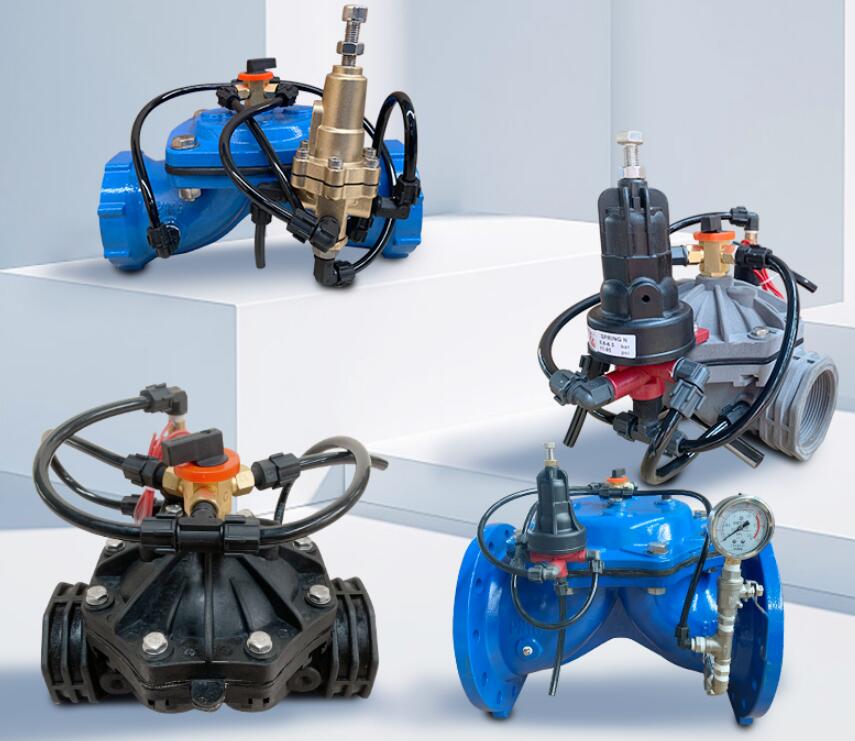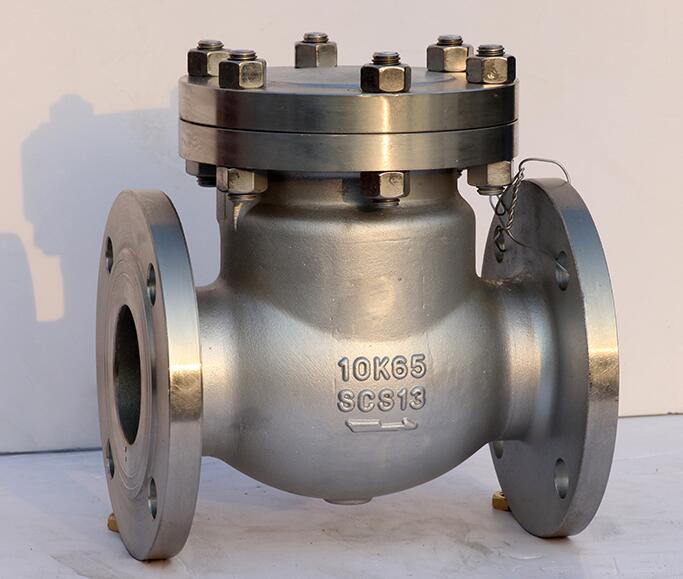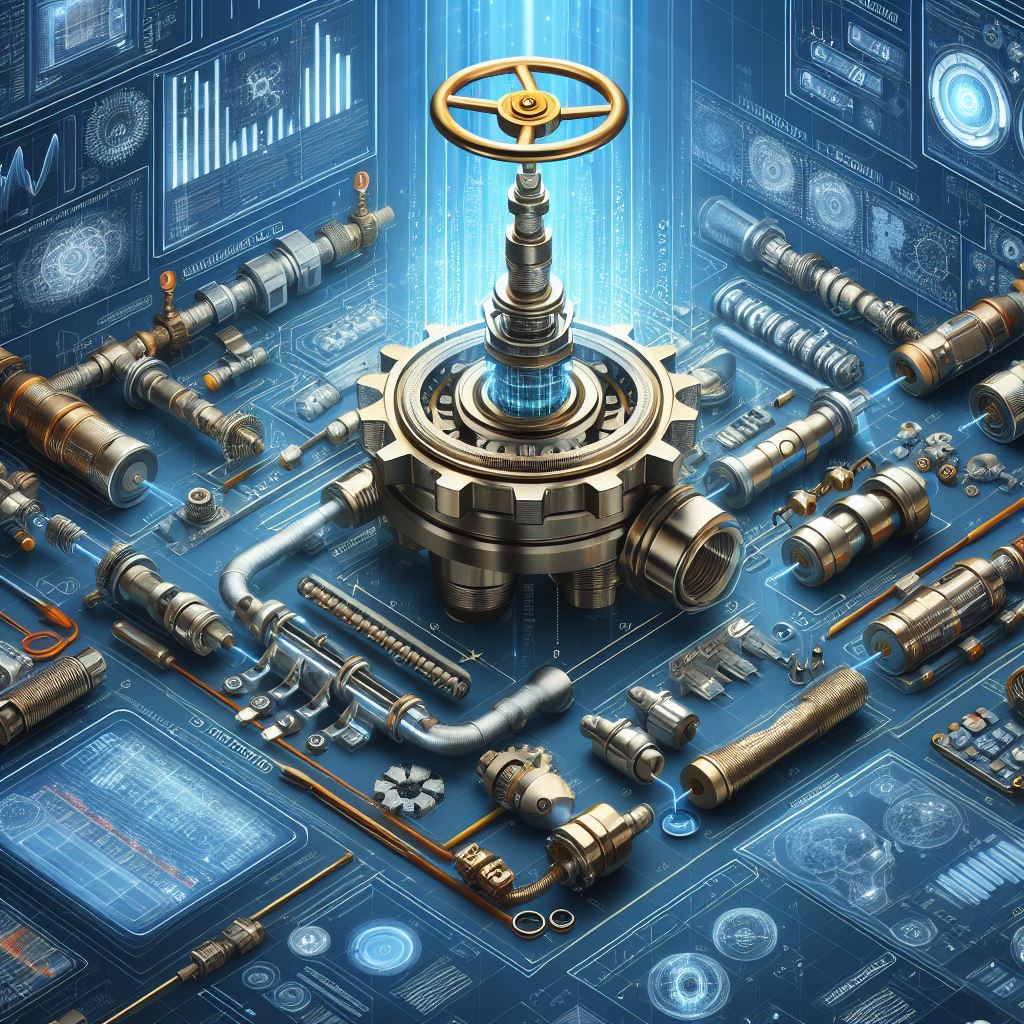Válvulas unidirecionais também chamado válvulas de retenção ou válvulas anti-retorno. É uma válvula onde o fluido só pode fluir ao longo da entrada e o meio na saída não pode fluir de volta.
É utilizado em sistemas hidráulicos para evitar o fluxo reverso do óleo, ou em sistemas pneumáticos para evitar o fluxo reverso de ar comprimido. Desempenham um papel crucial em diversas indústrias, garantindo o fluxo unidirecional de substâncias em tubulações, sistemas, e equipamentos, aumentando assim a segurança, eficiência, e desempenho.

As válvulas unidirecionais têm tipo dois reto e de ângulo reto
Tipo direto de mão única
com uma conexão rosqueada instalada no pipeline.
Uma válvula unidirecional direta é um tipo de válvula que permite que fluido ou gás flua em apenas uma direção, evitando o fluxo reverso. Possui um design direto, facilitando a passagem de fluxo desobstruída para maior eficiência e queda mínima de pressão. Esta válvula é comumente usada em aplicações onde a manutenção do fluxo direcional é crítica, como em sistemas de encanamento, irrigação, e processos industriais.
O tipo unilateral de ângulo reto tem três formas
conexão interferida, conexão soldada e conexão de flange.
Uma válvula unidirecional de ângulo reto é um tipo de válvula projetada para regular o fluxo de fluido ou gás em uma única direção, evitando o refluxo.. Possui uma configuração em forma de L ou em ângulo reto, permitindo a instalação em espaços apertados ou onde é necessária uma conexão perpendicular. Esta válvula é comumente usada em várias indústrias, incluindo automotivo, dispositivos médicos, e sistemas HVAC, onde existem restrições de espaço ou requisitos específicos de instalação.
Tipos de válvula unidirecional

Classificação Baseada em Design e Mecanismo
Os tipos de válvula de retenção são: tipo de mola, tipo de gravidade, tipo de balanço, tipo de diafragma de plástico. De acordo com a estrutura: válvulas de retenção de elevação, válvulas de retenção borboleta, válvulas de retenção oscilantes, válvula de retenção de esfera e válvula de retenção de aba.
- Válvula de retenção de elevação: Dividido em verificação vertical, verificação horizontal.
- Válvula de inspeção: Dividido em verificação de válvula única, válvulas de retenção dupla, verificação multi-flap.
- Válvulas de retenção de esfera: Válvulas de retenção de esfera são dispositivos mecânicos usados para controlar o fluxo de fluidos ou gases em tubulações, permitindo o fluxo em uma direção e evitando o refluxo na direção oposta.. Eles consistem em uma esfera esférica dentro de um corpo de válvula, que se move livremente para permitir o fluxo quando a pressão no lado de entrada é maior que no lado de saída. Quando o fluxo inverte, a bola se move para bloquear a passagem, impedindo o refluxo.
- Válvulas de retenção de aba: As válvulas de retenção são dispositivos mecânicos projetados para regular o fluxo de fluido ou gás em tubulações, permitindo o fluxo em uma direção e evitando o refluxo na direção oposta.. Eles apresentam uma aba ou disco articulado que abre na direção do fluxo e fecha para bloquear o fluxo reverso. Este design permite um controle de fluxo eficiente, evitando a reversão de fluido ou gás e garantindo a integridade do sistema de dutos. As válvulas de retenção flap são amplamente utilizadas em diversas indústrias devido à sua confiabilidade, baixos requisitos de manutenção, e eficácia na prevenção do refluxo.
Válvulas de retenção de acordo com a forma de conexão: tipo de verificação encadeada, tipo de verificação soldada, tipo de verificação de flange.
Classificação baseada na aplicação
| Tipo médio | Materiais recomendados |
| Líquidos corrosivos | Aço inoxidável, Liga de aço |
| Ácidos e álcalis fortes | PTFE (politetrafluoretileno) |
| Vapor de alta temperatura | Ligas especiais resistentes ao calor |
- Válvulas de retenção hidráulicas são componentes essenciais em sistemas hidráulicos, projetado para controlar o fluxo de fluido em uma direção, evitando o fluxo reverso. Eles utilizam mecanismos internos, como discos ou gatilhos com mola, para permitir que o fluido flua em uma direção, enquanto fecha automaticamente para bloquear o fluxo na direção oposta. Estas válvulas garantem a integridade e a eficiência dos sistemas hidráulicos, evitando o refluxo de fluidos, que pode causar danos ou mau funcionamento.
- Válvulas de retenção pneumáticas são dispositivos usados em sistemas pneumáticos para regular o fluxo de ar comprimido ou gases em uma direção, evitando o fluxo reverso. Eles operam usando mecanismos internos, como discos com mola ou gatilhos, que abrem para permitir o fluxo de ar em uma direção e fecham para bloquear o fluxo de ar na direção oposta. Estas válvulas garantem o bom funcionamento dos sistemas pneumáticos, evitando o refluxo, que poderia interromper as operações ou danificar equipamentos.
- Válvulas de retenção médica são componentes especializados usados em dispositivos e equipamentos médicos para controlar o fluxo de fluidos ou gases em uma direção, evitando o refluxo. Estas válvulas são cruciais para manter a integridade dos sistemas médicos, garantir a entrega adequada de medicamentos, gases, ou fluidos para pacientes durante procedimentos ou tratamentos. Eles operam usando mecanismos como bola, diafragma, ou designs com mola para permitir o fluxo em uma direção enquanto bloqueia o fluxo na direção oposta.
- Válvulas bico de pato são válvulas de retenção passivas unidirecionais projetadas para permitir o fluxo de fluido ou gás em uma direção, evitando o refluxo. Seu formato único lembra o bico de um pato, daí o nome. Estas válvulas consistem em um material elastomérico flexível, como silicone ou borracha, formado em um formato cônico que permanece naturalmente fechado quando nenhuma pressão é aplicada. Quando fluido ou gás flui na direção desejada, a pressão abre a válvula, permitindo passagem. No entanto, quando o fluxo para ou inverte, a elasticidade da válvula faz com que ela feche, impedindo o refluxo. As válvulas bico de pato encontram aplicações em vários setores, incluindo dispositivos médicos, tratamento de águas residuais, automotivo, e aeroespacial, onde o controle confiável de fluxo unidirecional é essencial.
- Válvulas de alívio de pressão são dispositivos de segurança usados para proteger equipamentos ou sistemas contra acúmulo excessivo de pressão, abrindo automaticamente para liberar o excesso de pressão. Eles operam detectando a pressão em um sistema e, quando excede um limite predeterminado, eles abrem para permitir a liberação de fluido ou gás, evitando assim danos ou falhas catastróficas. As válvulas de alívio de pressão são componentes cruciais em vários setores, incluindo petróleo e gás, processamento químico, Geração de energia, e tratamento de água, onde manter pressões operacionais seguras é essencial. Eles vêm em designs diferentes, incluindo acionado por mola, operado por piloto, e fole balanceado, cada um adequado para aplicações específicas e faixas de pressão.
Tipo de verificação comum
Estruturas de verificação comuns permitem o fluxo de fluido em apenas uma direção. A pressão de abertura direta é geralmente 0,03-0,05Mpa.
As principais aplicações das válvulas unidirecionais comuns:
- A válvula geralmente instalada na saída da bomba. Porque o choque de pressão afetará o funcionamento normal da bomba. E evita que a bomba não funcione quando o refluxo do óleo do sistema.
- As válvulas unidirecionais também são capazes de operar em câmaras separadas de alta e baixa pressão.
- Os tipos de válvulas unidirecionais são: válvulas de aceleração unidirecionais, válvulas redutoras de pressão unidirecionais, válvulas de sequência unidirecional.
- Nas válvulas de contrapressão, válvulas de retenção instalam o caminho de retorno.
Tipo direto
Válvulas de retenção diretas na direção do fluxo de óleo e na direção do eixo da válvula são as mesmas.
Válvulas de conexão de tubulação, a porta de óleo dessa válvula pode ser conectada ao tubo de óleo através do conector do tubo. O peso do corpo da válvula depende do suporte do tubo, então o volume da válvula não pode ser muito grande e muito pesado.
Válvulas unidirecionais de ângulo reto
O eixo de entrada e saída das válvulas de retenção em ângulo reto é perpendicular ao eixo do corpo da válvula.
Considerações de seleção
Ao selecionar uma válvula de retenção, vários fatores-chave precisam ser considerados para garantir desempenho e confiabilidade ideais em uma aplicação específica. Esses fatores incluem pressão operacional, requisitos de fluxo, características da mídia, faixa de temperatura, e seleção de materiais. Os detalhes são os seguintes:
- Pressão no trabalho é a base para a seleção. A pressão de trabalho da válvula de retenção deve corresponder à pressão máxima de trabalho do sistema para garantir que a válvula possa manter uma vedação estável sob alta pressão. Por exemplo, em equipamentos de corte por jato de água de alta pressão, a pressão de trabalho da válvula de retenção deve atingir centenas de MPa para evitar o fluxo reverso de água de alta pressão.
- Requisitos de fluxo afetam diretamente o tamanho e a velocidade de resposta da válvula. A seleção inadequada pode resultar em perda de pressão ou atraso na resposta. Para aplicações de grande fluxo, como grandes sistemas hidráulicos, pode ser necessário selecionar uma válvula de retenção controlada hidraulicamente de grande fluxo especialmente projetada com um fluxo nominal superior a 1000L/min.
- Consideração de características da mídia é particularmente importante. Diferentes meios têm diferentes requisitos para materiais e vedações de válvulas: lista 1
- Faixa de temperatura é outro parâmetro chave. A escolha dos materiais das válvulas e das vedações precisa levar em consideração a temperatura de operação para garantir que elas possam manter um bom desempenho sob condições extremas.. Por exemplo, algumas válvulas de retenção especiais podem operar em uma faixa de temperatura extremamente ampla de -196°C a +850°C[1].
- Além disso, método de montagem e conveniência de manutenção precisa ser considerado. A escolha da conexão rosqueada, conexão de flange ou soldagem deve corresponder à interface do sistema. A substituibilidade das peças de desgaste também afetará o custo operacional a longo prazo.
Considerações de instalação
Durante a instalação da válvula de retenção, além da escolha da direção e posição, existem algumas considerações importantes que requerem atenção especial para garantir que a válvula possa funcionar corretamente e maximizar seu desempenho. Essas considerações são as seguintes:
1.Verificação de vedação : Após a instalação, uma verificação abrangente de vedação deve ser realizada na conexão entre a válvula de retenção e a tubulação. Isto pode ser feito aplicando água com sabão ou um fluido especial de detecção de vazamentos para observar se há bolhas ou vazamentos anormais.. Para sistemas de alta pressão, pode ser necessário usar equipamento profissional de teste de pressão para verificar o desempenho da vedação.
2.Controle de vibração : Em algumas aplicações, a válvula de retenção pode produzir vibração significativa. Para reduzir esta vibração, as seguintes medidas podem ser tomadas:
- Use conectores flexíveis ou amortecedores de vibração para conectar a válvula de retenção e o sistema de tubulação
- Instale um amortecedor ou silenciador perto da válvula de retenção
- Ajuste a pré-carga da mola da válvula de retenção conforme necessário
3.Ignorar instalação : Em alguns sistemas críticos, recomenda-se instalar uma válvula de derivação manual próxima à válvula de retenção. Os benefícios de fazer isso incluem:
- Operação de emergência conveniente
- Quando a válvula de retenção precisa ser reparada ou substituída, todo o sistema pode ser operado sem parar
- Melhorar a confiabilidade e segurança geral do sistema
4.Suporte de pipeline: Para válvulas de retenção grandes ou pesadas, suporte de tubulação suficiente deve ser fornecido próximo ao local de instalação. O suporte razoável pode não apenas reduzir o estresse na válvula de retenção, mas também reduza a vibração do sistema de dutos, melhorando assim a estabilidade e a vida útil de todo o sistema.
5.Conexão elétrica: Para válvulas de retenção com funções de controle elétrico (como válvulas de retenção elétricas), os seguintes pontos devem ser observados:
- Instale dispositivos de proteção contra raios e surtos quando necessário
- Certifique-se de que a conexão elétrica atenda aos padrões de segurança relevantes
- Use cabos e conectores de especificações apropriadas
Descrição das tendências emergentes e inovações de válvula unidirecional

As tendências e inovações emergentes na tecnologia de válvulas unidirecionais significam uma fase transformadora nos mecanismos de controle de fluidos. Esses avanços são caracterizados por uma mudança para sistemas mais inteligentes, mais eficiente, e soluções ambientalmente sustentáveis.
- Tecnologias de válvulas inteligentes:
- Integração de sensores e atuadores para monitoramento e controle em tempo real.
- Implementação de algoritmos de manutenção preditiva para atendimento proativo.
- Materiais Sustentáveis:
- Adoção de materiais ecológicos, como polímeros de base biológica e metais recicláveis.
- Desenvolvimento de válvulas com pegada ambiental reduzida e ciclo de vida melhorado.
- Integração com IoT:
- Conectividade com Internet das Coisas (IoT) plataformas para operação remota e análise de dados.
- Utilização de soluções baseadas em nuvem para gerenciamento e otimização centralizados.
- Melhorias de desempenho:
- Capacidades aprimoradas de controle de fluxo para regulação precisa do fluxo de fluido.
- Redução da queda de pressão e do consumo de energia através de designs inovadores.
- Adaptação às necessidades da indústria:
- Personalização de projetos de válvulas para atender a requisitos e aplicações específicas da indústria.
- Soluções personalizadas para ambientes desafiadores, como condições corrosivas ou de alta pressão.
Estas tendências e inovações emergentes refletem o compromisso da indústria com a eficiência, sustentabilidade, e avanço tecnológico, abrindo caminho para uma nova era de soluções de controle de fluidos.
